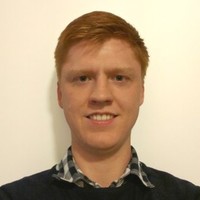More information is given below the news ....
News:
Konstantinos Nikolaidis is defending his PhD Thesis on September 16th 2021 via zoom: https://www.mn.uio.no/ifi/forskning/aktuelt/arrangementer/disputaser/2021/nikolaidis.html
Our paper "Learning Realistic Patterns from Visually Unrealistic Stimuli", has been accepted for publication in the Journal of Artificial Intelligence Research (September 2021)
The video presentation of our IoT Health (ICC 2021 workshop) paper "Evaluating a Low-Cost Strain Gauge Breathing Sensor for Sleep Apnea Detection at Home" is available here:
"Machine Learning for Sleep Apnea Detection with Unattended Sleep Monitoring at Home" authored by Stein Kristiansen, Konstantinos Nikolaidis, Thomas Plagemann, Vera Goebel, Gunn Marit Traaen, Britt Øverland, Lars Aakerøy, Tove-Elizabeth Hunt, Jan Pål Loennechen, Sigurd Loe Steinshamn, Christina Holt Bendz, Ole-Gunnar Anfinsen, Lars Gullestad, Harriet Akre has been accepted for publication in ACM Transactions on Computing for Healthcare (November 2020)
"Comparing Manual and Automatic Scoring of Sleep Monitoring Data from Portable Polygraphy" authored by Kristiansen S, Traaen GM, Øverland B, Plagemann T, Gullestad L, Akre H, Nikolaidis K, Aakerøy L, Hunt E, Loennechen JP, Steinshamn S, Bendz C, Anfinsen OG, Goebel V has been accepted for publication in the Journal of Sleep Research (Wiley, IF 3.432)
HealthTalk published an article and podcast about the Cesar project and our collaboration with Garmin (see here...)

"Augmenting Physiological Time Series Data: A Case study for Sleep Apnea Detection" authored by Konstantinos Nikolaidis Stein Kristiansen, Vera Goebel, Thomas Plagemann, Knut Liestøl, and Mohan Kankanhalli has been accepted at ECML PKDD 2019 (18% acceptance rate).
|
Konstantinos developed a very interesting approach to train models without access to original data. The approach and results are captured in a paper "Learning from higher-layer Feature Visualization of Deep Networks - Possibilities and Limitations" (available on arXiv.org arXiv:1903.02313). |
|---|
 |
Fredrik Løberg published the results of his Master Thesis at the workshop HealthMedia at ACM Multimedia 2018 and presented his work at the workshop in Seoul. |
Our study with the Physionet data sets Apnea-ECG and MIT-BIH showed that machine learning can automatically detect apnea events with high performance, even with only one signal (accuracy > 90%). Furthermore, the simple KNN technique worked surprisingly well. The results of the extensive study are published in IEEE Access.
A short introduction to OSA
Sleep apnea is a common sleep disorder that affects the natural breathing cycle during sleep with periods of reduced respiration or no airflow at all. In Obstructive Sleep Apnea (OSA), the airway is physically obstructed, resulting in a reduction or a complete stop of air passing through. Disrup- tions of normal airflow lead to reduced oxygen saturation and the brain will force an awakening in order to resume normal breathing. The sufferer will most likely not remember the continual awakenings. With such disrupted sleep, the person will in some cases never go into deep sleep, resulting in daytime sleepiness and fatigue. If untreated, OSA can lead to serious health implications and, in the worst-case, death through suffocation if the person is unable to wake up. Hyper- tension, stroke and other cardiovascular diseases, metabolic syndromes such as diabetes, depression and anxiety have all been linked to sleep apnea. With the daily drowsiness, sleep apnea sufferers are more prone to accidents, especially motor vehicle accidents and other activities that require a high level of concentration.
OSA is a common sleep disorder, e.g., one out of six persons in Norway is estimated to suffer from OSA. Unfortunately, OSA is often undiagnosed or diagnosed very late. It is estimated that 70-80% of those affected remain undiagnosed [38]. The main reason that OSA is so severely under-diagnosed is that feeling tired during the day is nor- mal for many people and the sufferers typically have no recollection of the nightly awakenings. Therefore, sufferers can typically only describe vague symptoms to the medical doctor that do not necessarily indicate the need to perform polysomnography (PSG), which is the gold standard for OSA diagnosis.
Traditionally, PSG is performed in a sleep laboratory. It requires the patient to stay overnight and record various physiological signals during sleep, such as the electrocar- diogram (ECG), electroencephalogram (EEG), electromyo- gram (EMG), electrooculograph (EOG), oxygen saturation, heart rate, blood pressure and respiration from the abdomen, chest and nose. These signals are manually evaluated by a sleep technician to give a diagnosis. PSG in a sleep laboratory can be uncomfortable for the patients, because they have to sleep in an unfamiliar environment, are monitored by the personnel in the sleep laboratory, and EEG, ECG, EMG, and EOG require the use of wires attached to the head or body which restricts the movements during sleep. Therefore, there is a natural threshold for individuals to expose themselves to this diagnosis. Furthermore, sleep laboratories are expensive, as they require personnel to monitor and analyze the results, which makes it practically impossible to prescribe PSG to everybody over a certain age. Portable monitoring systems for unattended sleep monitoring at home are now available (classified as Type III sleep monitors). These sleep monitoring systems are often accompanied with software to automatically analyze the recorded sleep data, but a human expert is required to perform the final data analysis. Further- more, all sensors need to be wired to a central data recording unit worn on the body.
The goal of CESAR
Instead of providing alternatives to diagnosis with PSG, we aim to reduce the threshold to perform a clinical diagnosis of OSA and reduce the time until sufferers are diagnosed. The core idea is to provide a slimmed down alternative to portable Type III sleep monitoring, based on smart phones, low cost (wireless) sensors (e.g., from BiTalino [5], Libelium [23], or Sweetzpot [40]), and data mining. Patients should be able with minimal costs to collect during sleep useful information for OSA detection. Data mining should analyze the recorded sleep data to detect apnea events, which indicates for the patient whether it is recommended to visit a physician. Furthermore, the recorded data should give the physician a better foundation to decide whether a PSG should be performed.